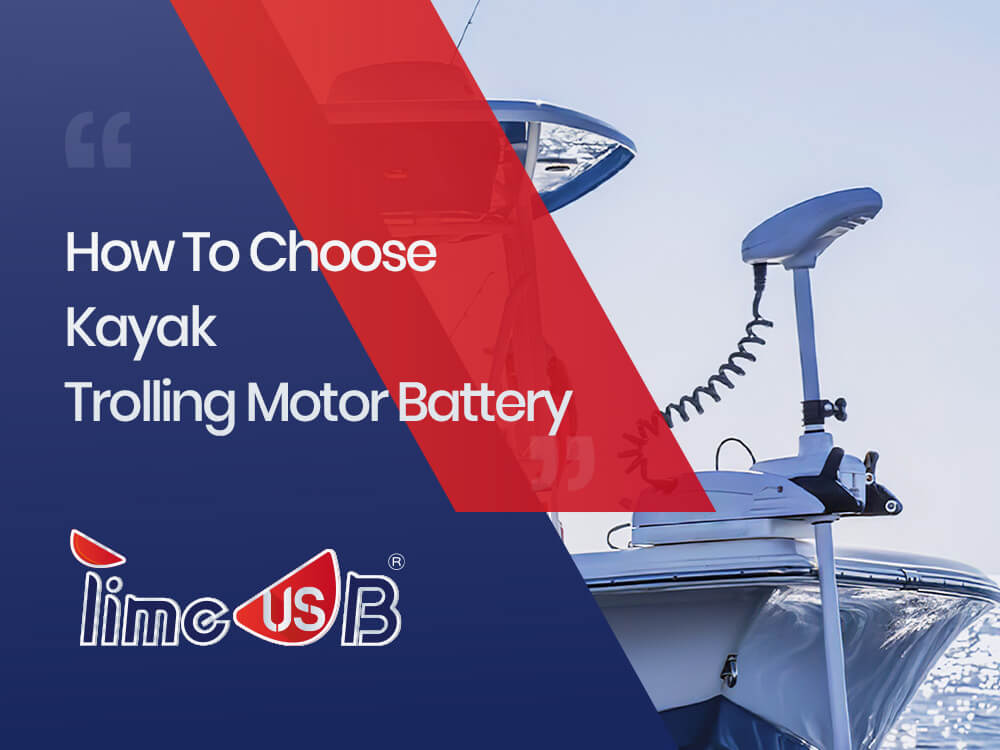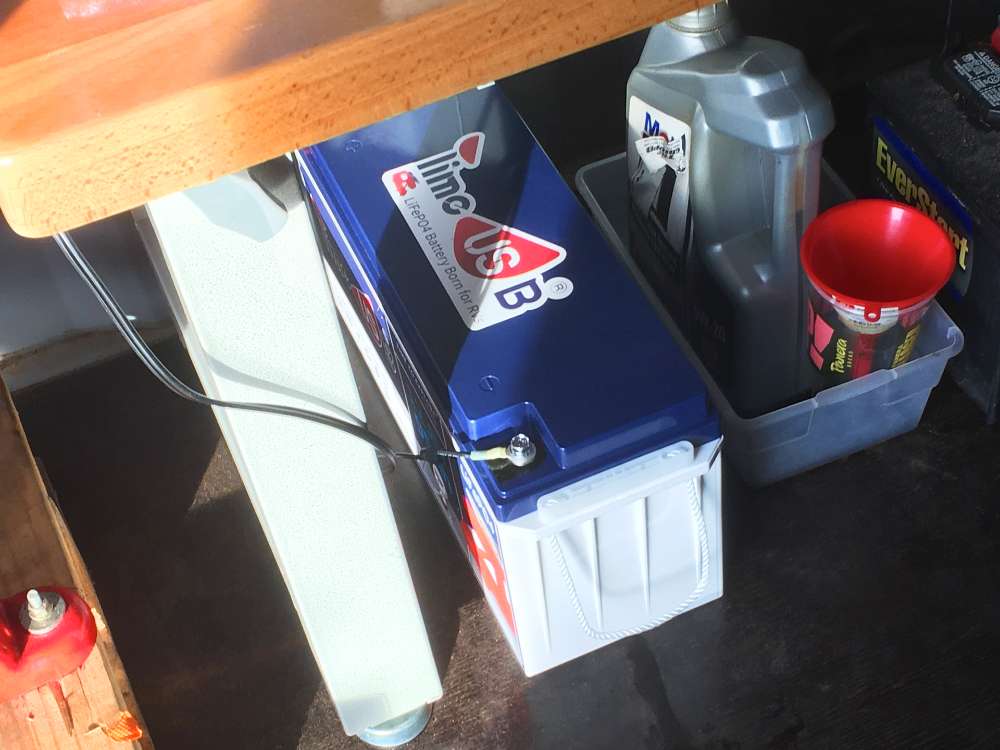Lithium VS. Lead-Acid?How To Choose Kayak Trolling Motor Battery?

When it comes to kayak fishing, having a reliable trolling motor battery is essential for an enjoyable and successful experience on the water. The two most common types of batteries used for kayak trolling motors are lithium and lead-acid batteries.
In this article, we will compare the features and benefits of lithium and lead-acid batteries, and provide you with valuable insights to help you make an informed decision when choosing the ideal battery for your kayak trolling motor.
What Is A Kayak Trolling Motor?
A kayak trolling motor is a device that can be attached to a kayak to provide propulsion and assist in maneuvering on the water. It consists of an electric motor, propeller, and control system. Unlike traditional paddle-powered kayaks, a trolling motor allows kayakers to navigate more easily, cover greater distances, and conserve energy during long fishing trips.
The kayak trolling motor is usually mounted at the stern (rear) or the bow (front) of the kayak, depending on the design and configuration. It can be attached using various mounting systems, such as brackets or clamps, to ensure stability and security.
Trolling motors for kayaks are typically electric and powered by batteries. This makes them quiet, environmentally friendly, and suitable for fishing in calm and freshwater environments. The electric motor can be controlled using a tiller handle or a remote control, which allows the kayaker to adjust the speed and direction of the motor as needed.
Kayak trolling motors come in different sizes and power ratings to accommodate various kayak sizes and weight capacities. It is essential to choose a trolling motor and battery combination that provides sufficient power and runtime for your specific kayak and usage requirements.
Exploring Lead-Acid Batteries
Lead-acid batteries have been the traditional choice for kayak trolling motors and are known for their durability and reliability. They are relatively affordable, making them a popular option for anglers on a budget. Lead-acid batteries are available in two variants: the sealed lead-acid (SLA) and the flooded lead-acid (FLA) batteries. SLA batteries are maintenance-free and are designed to be spill-proof, while FLA batteries require occasional maintenance to check the water levels of the cells. Compared to lithium batteries, lead-acid batteries are bulkier and heavier. They also have a shorter lifespan and take longer to charge.
Pros of Lead-Acid Batteries for Kayak Trolling Motors
Affordability: Lead-acid batteries are a cost-effective option, with replacements typically costing under $200. The low upfront cost makes them an attractive choice for anglers on a budget.
Sealed Options: Sealed lead-acid batteries, such as AGM (Absorbent Glass Mat) batteries, eliminate the risk of spillage and environmental damage associated with non-sealed versions. This adds an extra layer of safety and convenience.
Cons of Lead-Acid Batteries for Kayak Trolling Motors
Heavy Weight: Lead-acid batteries are notably heavier compared to lithium-ion batteries. The additional weight can cause the kayak to ride lower in the water, affecting maneuverability and overall performance.
Limited Discharge: To maintain power efficiency and prevent damage, lead-acid batteries should not be discharged below 50% of their capacity. Discharging them below this threshold not only reduces their lifespan but also depletes the battery more rapidly.
Slow Charging: Charging lead-acid batteries is a slower process compared to lithium-ion batteries. They require multiple charging cycles, including a float-charge stage that takes longer and consumes more power. This can be a drawback for anglers who prefer quick recharge times.
Environmental Considerations: It is crucial to use only sealed lead-acid batteries for kayak trolling motors to prevent acid spillage and environmental harm. Non-sealed versions require careful handling and maintenance to avoid any potential damage.
Understanding Lithium Batteries
Lithium batteries have gained popularity in recent years due to their numerous advantages. These batteries are lightweight, compact, and offer a high energy density, which means they can provide more power while weighing significantly less than lead-acid batteries. Lithium batteries also have a longer lifespan, allowing you to use them for several seasons without needing a replacement. They are quick to charge and hold their charge for extended periods, which is particularly useful for anglers who require longer sessions on the water.
Benefits of Lithium-ion Batteries for Kayak Trolling Motors
Lightweight: Lithium-ion batteries are well-suited for kayaks due to their lightweight nature. They provide a more balanced ride with reduced drag, enhancing the overall performance of the kayak.
Fast Charging: Lithium-ion batteries can be fully charged in just a few hours, saving time and allowing you to get back on the water quickly. Their fast charging capabilities outperform lead-acid batteries, which require longer charging times.
Deep Discharge: Unlike lead-acid batteries, lithium-ion batteries can be fully discharged without damaging their lifespan. They automatically shut off when reaching 100% discharge, protecting the battery from harm.
Steady Power: Lithium-ion batteries offer steady power throughout their charge, maintaining a more consistent amp draw. This enables better estimation of battery life and ensures a reliable power output for your trolling motor.
Long Lifespan: Lithium-ion batteries have an impressive lifespan, often exceeding a decade with proper care. This longevity makes them a durable and reliable choice for kayak anglers, reducing the need for frequent battery replacements.

Cost Savings: Although lithium-ion batteries have a higher upfront cost compared to lead-acid batteries, they provide significant cost savings in the long run. With their extended lifespan, you can avoid the expense of purchasing multiple lead-acid batteries over the same period.
Drawbacks of Lithium Battery
The main drawback of lithium-ion batteries is their higher initial cost compared to lead-acid batteries. However, Timeusb offers cost-effective lithium batteries that make the upgrade more affordable.
Key Considerations for Choosing a Kayak Trolling Motor Battery
Weight: Opt for a lightweight battery to minimize drag on your kayak, allowing for better maneuverability and increased efficiency.
Amp Hour Rating: Consider the amp-hour (Ah) rating of the battery to ensure it can provide sufficient power for your trolling motor. Higher ratings may be necessary for longer trips or demanding conditions.
Size and Portability: Choose a battery that is easy to transport and fits well within your kayak. Bulky batteries can affect balance and make handling more challenging.
Lifespan: Look for a battery with a long lifespan to maximize your investment. Consider the number of full discharge cycles it can endure and any available warranties for added peace of mind.
Timeusb Batteries, for example, provide exceptional durability, with an average lifespan of 4,000 full discharge cycles and a 5-year warranty.
By carefully considering these factors, you can make an informed decision and select the ideal kayak trolling motor battery that meets your specific needs. This ensures reliable performance, enhances your kayaking experience, and allows for maximum enjoyment on the water.
How Long Will a 100Ah Lithium Battery Run a Kayak Trolling Motor?
The runtime of a lithium battery for a kayak trolling motor is influenced by factors such as the motor's power consumption and operating speed. To estimate the runtime, you can calculate the amp draw of your trolling motor and divide the battery's capacity by that figure.
For example, let's assume your trolling motor draws 25 amps at its maximum speed. To estimate the runtime, divide the battery's capacity by the amp draw:
100Ah / 25A = 4 hours
In this case, using a 100Ah lithium battery with a trolling motor that draws 25 amps at maximum speed would provide approximately 4 hours of runtime. Keep in mind that this is just an estimation, as actual runtime can be affected by environmental conditions and usage patterns.
Are Lithium-Ion Kayak Trolling Motor Batteries Worth the Investment?
Considering the information provided, opting for a lithium-ion battery for your kayak trolling motor is a worthwhile decision. While it may require a higher upfront cost, the long-term benefits make it an excellent investment.
Is it Necessary to Charge My Batteries After Every Use?
It is generally advisable to charge your batteries after each use, even if you're using lithium batteries that are less prone to damage when partially discharged compared to lead-acid batteries.

Regularly charging your lithium batteries helps optimize their capacity and ensures they are fully prepared to deliver maximum runtime whenever you embark on your next water excursion. This practice helps maintain their overall performance and reliability, ensuring you have a dependable power source for your future boating adventures.


![[Full Guide] The Comprehensive Guide to LiFePO4 Battery Life](http://www.timeusbpower.com/cdn/shop/articles/The_Comprehensive_Guide_to_LiFePO4_Battery_Life_757d2749-9468-4739-ac83-0960c27749b0.jpg?v=1722918256&width=1080)
